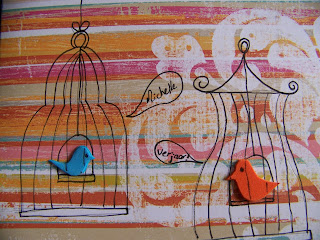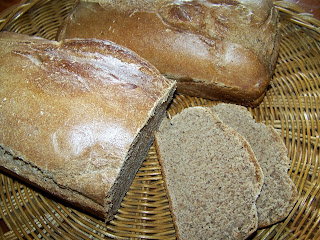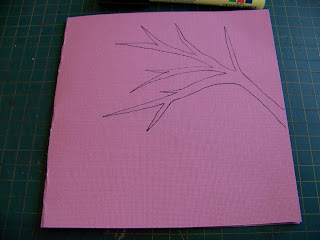It is best to start quick cards on pretty backgrounds. I have this half of an original 12" x 12" craft paper left over from a previous project. It will be perfect for today's card.
I start by folding it in half to form a card.
Then I use a pencil to draw a quick outline of a bird cage with a perch.
I add some detail to hang both the perch and the cage.
Then I fill in the bars of the cage.
The second cage will be on a stand and I start by drawing this.
I draw a differently shaped cage on the stand to keep it interesting. Do not aim to get the sides exactly even. It will distract from the doodling effect we are attempting to achieve. Remember the perch inside the cage.
Add the bars of the second cage.
I then used a marker to redraw the pencil lines.
I found some off-cuts in my Dala foam rubber stash and drew two small birds on it. Keep it very simple. Simplicity is key in this project. If you don't have foam rubber, you can cut the birds from paper, or even newspaper.
Cut the birds out and glue them onto the card, placing them on the perches inside the cages.
Draw the lines of the bars over their bodies and add eyes.
Add your message. Translated, this means: "A little birdie told me ..."
Now add some speech bubbles and the message of the card. This can be anything you wish. Mine has the name of a birthday girl. Translation: "Michelle ... is having a birthday."
I used a thicker marker to fill in the solid areas and my card was done. Quick, easy and very effective.
Marietjie Uys (Miekie) is a published author. You can buy the books here:
You can purchase Designs By Miekie 1 here.
Jy kan Kom Ons Teken en Verf Tuinstories hier koop.You can purchase Designs By Miekie 1 here.
Jy kan Kom Ons Kleur Tuinstories In hier koop.
Jy kan Tuinstories hier koop.
For more crafty ideas and great products, visit A Pretty Talent on Facebook.
Remember to keep nurturing your TALENT for making PRETTY things.
You can subscribe to this blog and receive regular updates by email by simply registering your email address at the top of the current blog.







































































